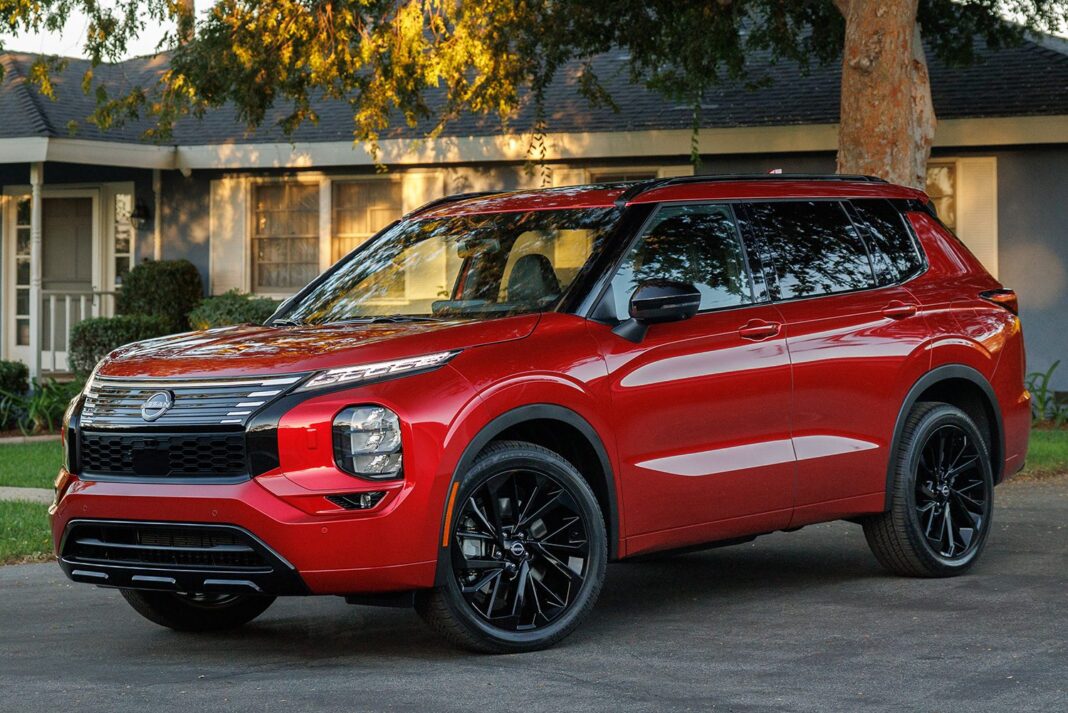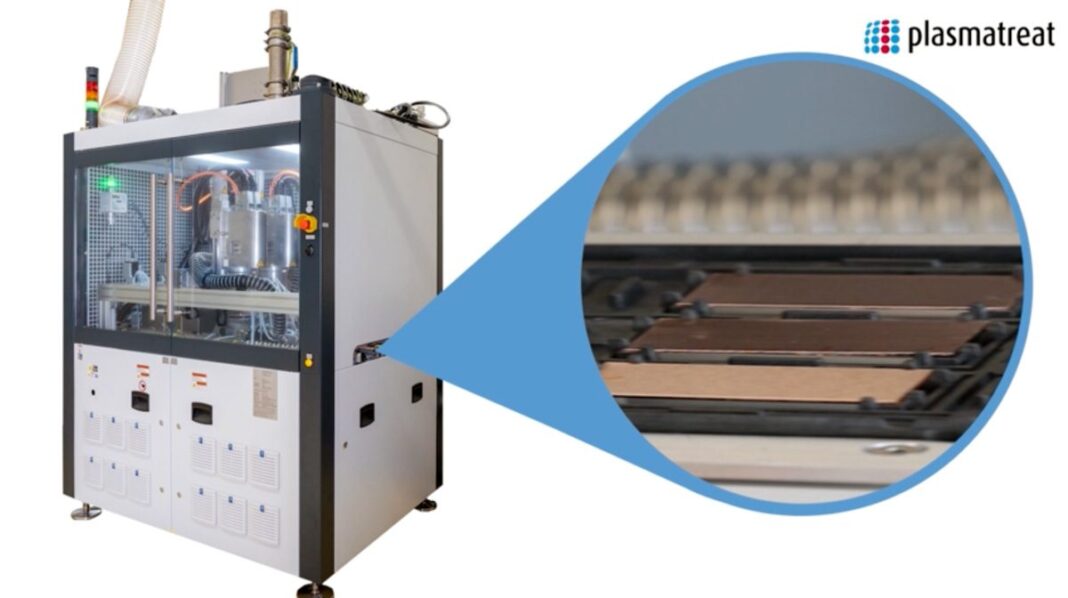Well, we didn’t see this one coming: The 2026 Nissan Rogue Plug-In Hybrid isn’t actually a Nissan Rogue. It’s a Mitsubishi Outlander PHEV with a Nissan grille and badges slapped on.
When Nissan announced more than a year ago it would sell a plug-in hybrid Rogue in the U.S., the industry assumption was that it would add the Mitsubishi-developed PHEV powertrain from the Outlander—which shares underpinnings with the current Rogue—to the current Nissan Rogue, on sale since the 2021 model year.
Nope. The 2026 plug-in hybrid version of the Rogue doesn’t actually resemble the rest of the Nissan Rogue lineup. It has entirely different sheet metal and styling, and a different interior, to any other Rogue. It’s literally a Mitsubishi Outlander PHEV with different labels, including that model’s vestigial third row of seating, a feature no longer offered on other Rogues.
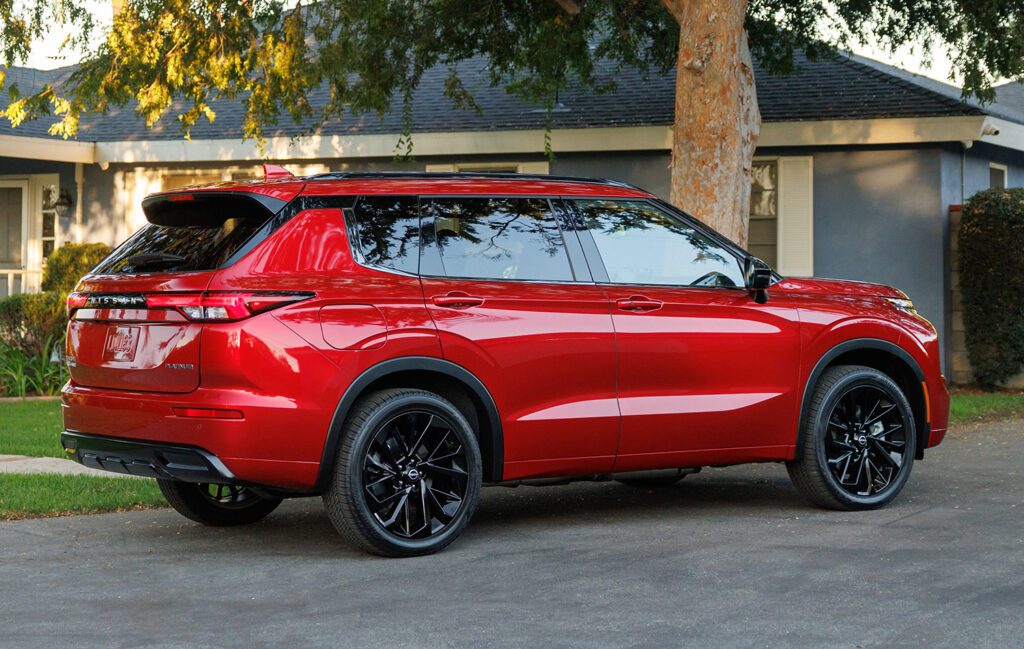


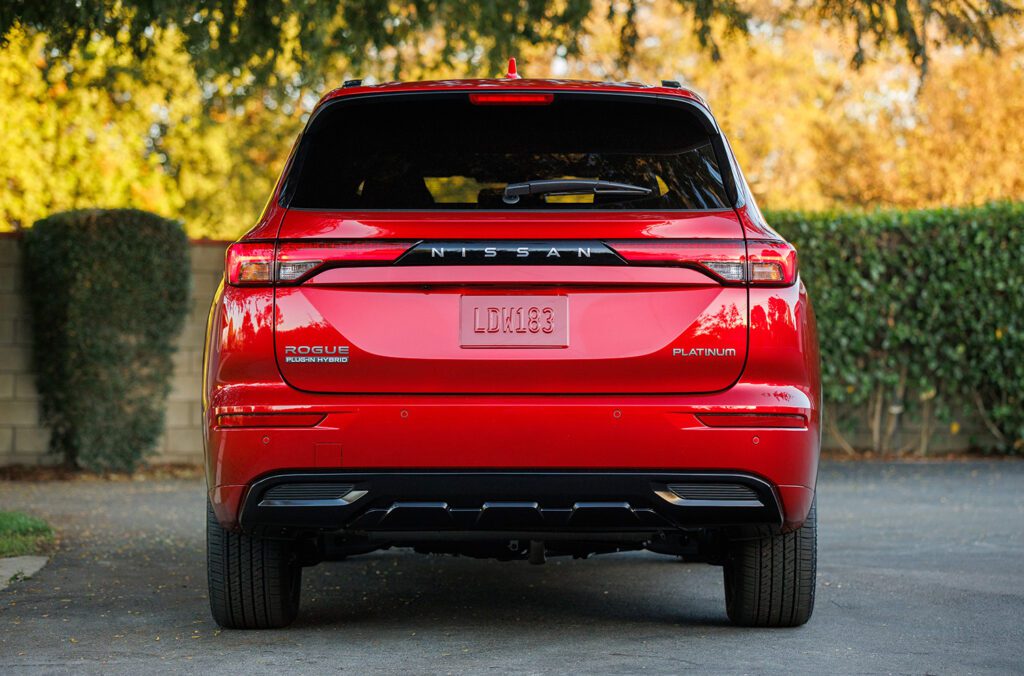
The plug-in hybrid Outlander is a perfectly suitable vehicle, one that attracts a more affluent audience—Mitsubishi has said its Outlander buyers are a separate breed from those for anything else in its aging lineup. But when it was launched in 2021, it was deliberately distinct and separate from the Rogue sibling whose platform it shared. Except, now, there’s a “Rogue” that looks just like it, and on sale at vastly more dealerships to boot. (Mitsubishi has slightly over 300 outlets in the U.S.; Nissan has more than 1,000.)
This means Nissan will soon sell Rogues not only with three different powertrains: the base 1.5-liter turbocharged 3-cylinder engine with continuously variable transmission (CVT); the plug-in hybrid version, with a Mitsubishi 2.4-liter inline-4 and hybrid transmission; and soon the e-Power series hybrid the company plans to bring to the market within a year or so. And those Rogues will come in two entirely distinct compact-SUV bodies. That seems … confusing.
Multiple modes of operation
This reporter drove the 2022 Outlander PHEV before its U.S. debut, and found it a competent and mechanically sophisticated plug-in hybrid. It had up to 38 miles of EPA-rated range, just slightly lower than the Toyota RAV4 Prime that year.
The hybrid system developed by Mitsubishi for its 2012 predecessor offered multiple modes of power delivery. A pair of motor-generators between the engine and front wheels functions as a continuously variable automatic transmission. It operates somewhat akin to the Toyota 2-motor hybrid system, in which one motor powers the wheels while the other motor acts as a generator to recapture energy to recharge the battery pack during overrun or braking. For the all-wheel drive required of any SUV, a third electric motor powers the rear wheels—and the hybrid control software shuffles power among the various modes and wheels as required.
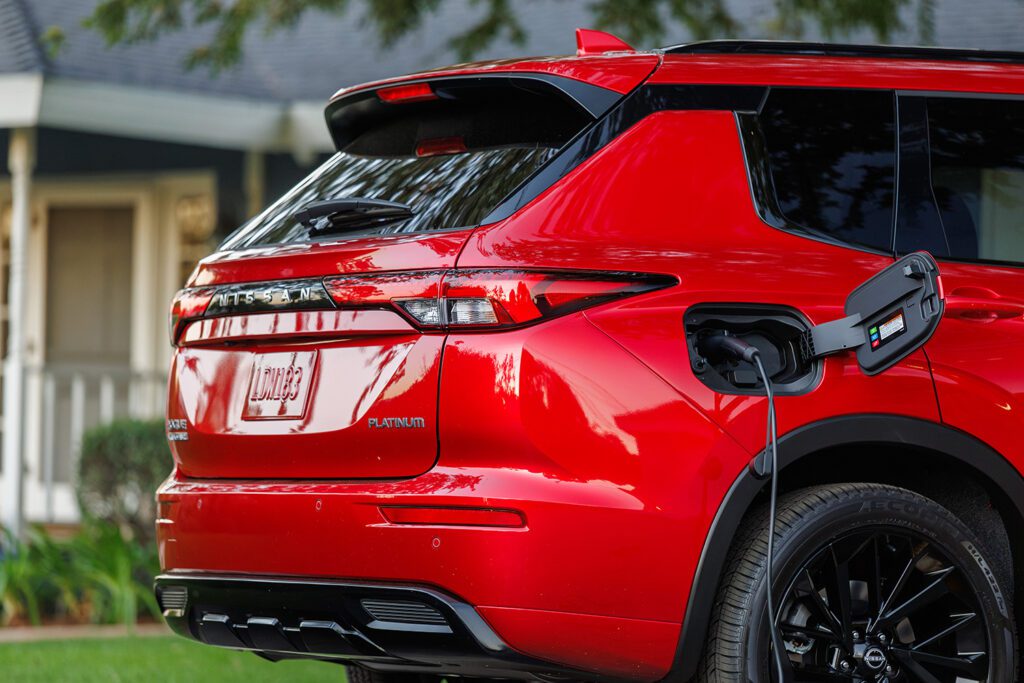
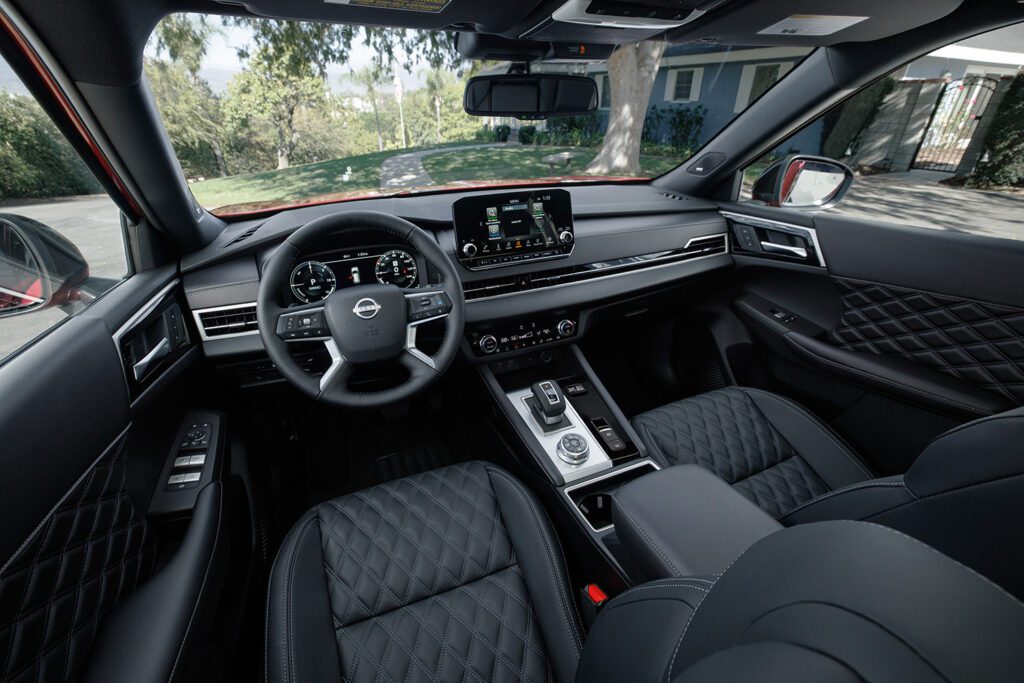
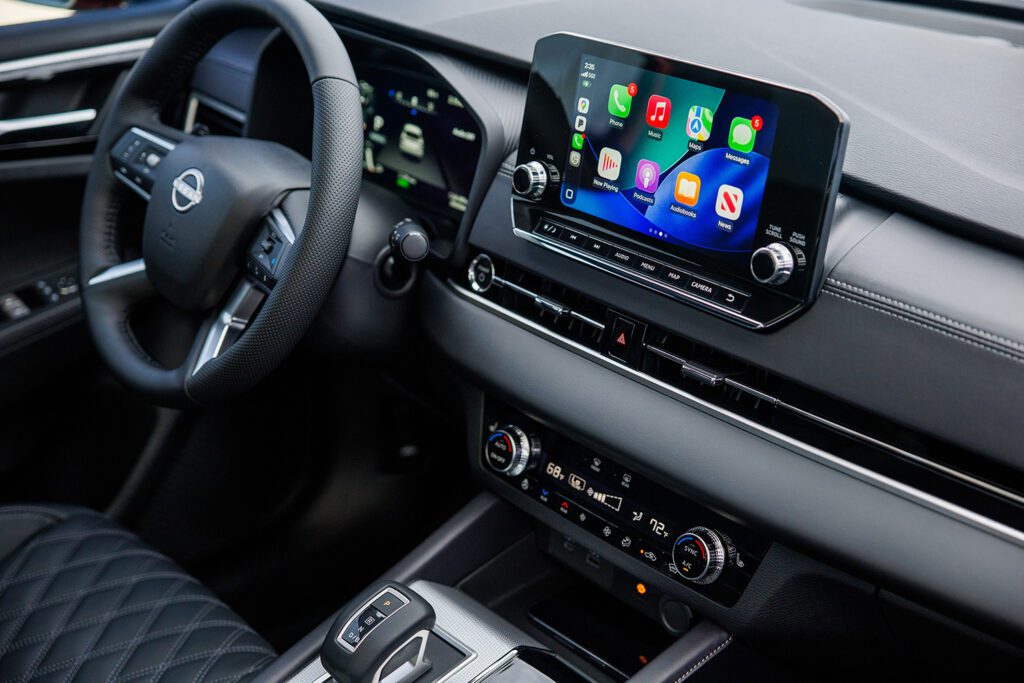
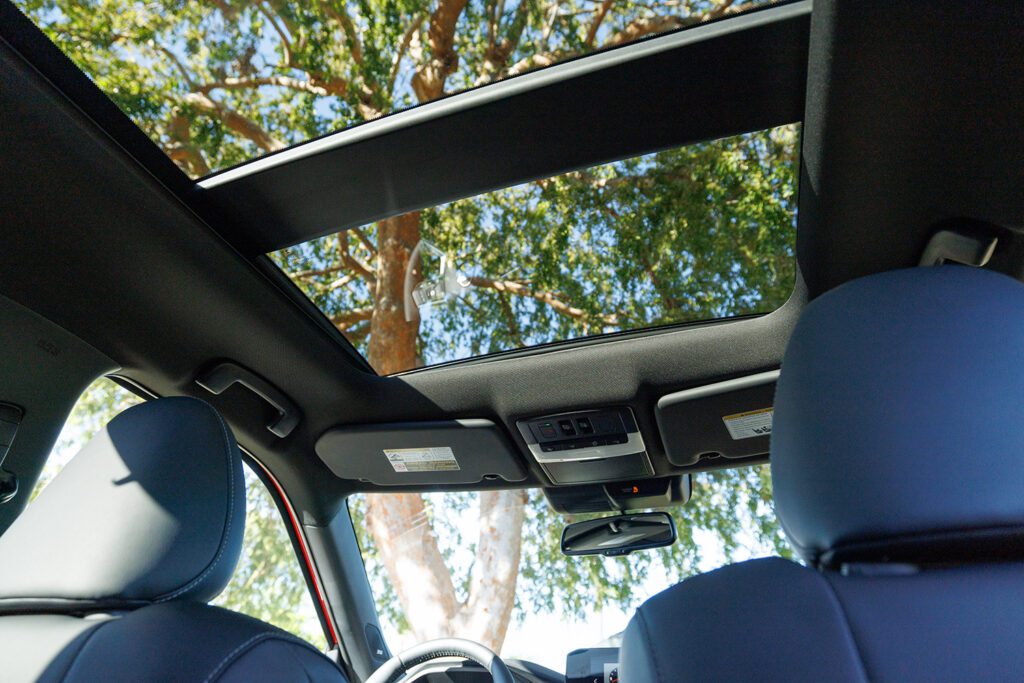
This allows multiple modes of operation: The combustion engine can drive the front wheels alone and/or power a generator that recharges the battery while a second motor powers the wheels (as a series hybrid). Or the engine and e-motor can power the front wheels together as a parallel hybrid, depending on which combination uses the least overall energy. Separately, that electric motor in the rear kicks in to provide all-wheel drive when needed, in bad weather or if traction to the wheels varies.
2022 Outlander PHEV = 2026 Rogue PHEV
As for specs, the 2026 Rogue Plug-In Hybrid is identical to that 2022 Outlander PHEV. Both vehicles quote a total output of 248 horsepower for the engine and two electric motors, with peak torque of 332 pound-feet. Their lithium-ion battery packs, mounted below the cabin floor, have 20.0 kilowatt-hours of capacity. And their fuel economy in gasoline-hybrid mode is 26 mpg combined.
One area of differentiation is in charging: the 2026 Rogue Plug-In Hybrid offers only a J-1772 charging port, quoting 7.5 hours for a full recharge using Level 2 charging at the rated 3.5 kilowatts of its onboard charger. The Outlander PHEV, however, also included a 50-kW DC fast-charging port—using the Japanese CHAdeMO standard now being sunsetted in the U.S. market. The plug-in Rogue includes a Level 1 (120-volt) portable charging cable as standard equipment.
An open question around this vehicle is whether Nissan will make much effort to sell them in volume. Recall that it announced the vehicle before the November presidential election, under vehicle emission limits then in force. With the current U.S. administration having zeroed out all penalties for violating vehicle emission rules, and working to eradicate California’s longstanding EPA waivers to set its own zero-emission vehicle standards, Nissan would suffer little short-term penalty if it doesn’t sell any PHEVs.
On the other hand, the same goes for its upcoming e-Power series hybrids. And because automotive product cycles usually exceed the length of U.S. presidential terms, the company will likely continue on the path toward reducing or eliminating tailpipe emissions of its mainstream vehicles—because perhaps emissions rules may return at some point in the future.
We just hadn’t expected what the British used to call sheer “badge engineering” to be Nissan’s first plug-in hybrid. But here we are. So if you want all the details, find a drive review of the Mitsubishi Outlander PHEV. There likely won’t be a lot of difference.
The 2026 Nissan Rogue Plug-In Hybrid will debut at the Los Angeles Auto Show, which opens to the public on Friday, November 21.
